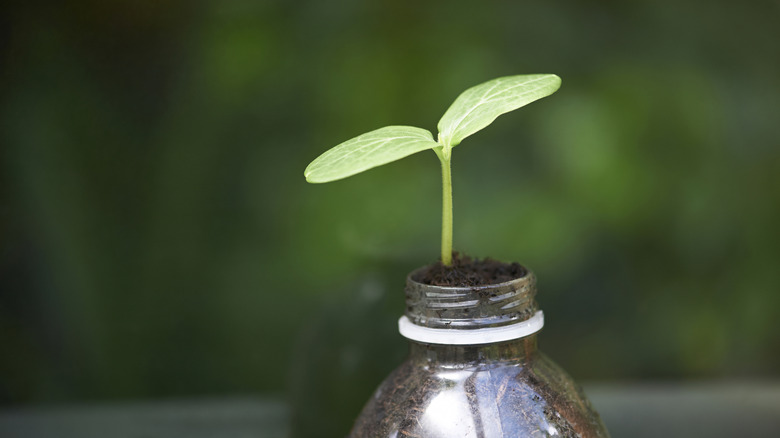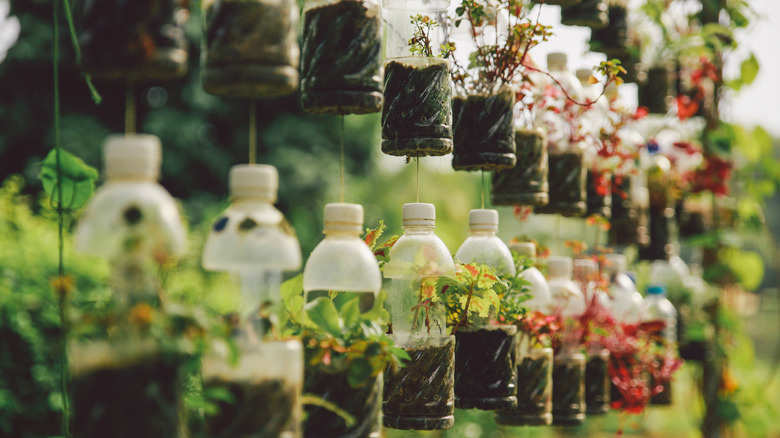Don't Throw Out Empty Water Bottles - Give Them New Life In Your Garden Instead
Plastic water bottles are a convenient way to carry water and hydrate on the go. Unfortunately, they can also be harmful to the environment. Plastic persists for many years before decomposing and more often than not, these bottles end up taking up space in landfills, or worse, harming wildlife and the rest of the environment. They don't have to be such a waste, though.
That's because you can use water bottles to make self-watering planters. These will potentially save you a lot of effort when watering your plants. To start, cut the top quarter off of your water bottle and poke a hole in the cap. Then, take some string, make a loop, push it through that hole, and tie a knot to keep the string in place. Put the portion of the bottle you cut off (with the cap screwed on) back in the bottle capside down. Finally, fill the bottom of the bottle with water, put soil in the cut-off portion, and sow your seeds. The string will draw the water up into the soil and hydrate your plants with little effort on your part. All you have to do is add water to the bottom periodically.
Your empty water bottles are more useful and versatile than you might think, even if they're not the most environmentally friendly. While you're looking for a good alternative to plastic water bottles, put your existing ones to good use so that they don't become an environmental hazard. Reuse comes first in reuse, reduce, recycle for a reason, after all.
Plastic bottles are great multipurpose garden tools
Self-watering planters aren't the only way to keep your bottles out of the landfill. Whether it's using empty water bottles to separate eggs or putting them to use in your garden, you're spoiled for choice when it comes to reusing your bottles. Other great garden uses include drip irrigation and protecting your seedlings. Both also involve cutting the bottom off of a bottle. To protect seedlings, simply cover them with the cut bottle, leaving the cap off for more air circulation. For drip irrigation, poke holes in the top and cap, bury it upside down close to a plant, and pour in water. You can use a similar trick to water your garden with a wine bottle, if you happen to have extras of those.
Plastic water bottles can also be turned into garden tools. With just a pair of scissors, you can turn a water bottle into a watering can, a garden trowel, and even a fruit picker. Plastic can be a durable material, and these homemade tools can be just as good as store-bought ones depending on how you care for them.
If you're looking for a large-scale project, you can even use plastic bottles in place of glass to make panels for your own greenhouse (or even mini greenhouses for seedlings). Ultimately, it's a mistake to think that just because the bottle is empty you have to be done with it.

